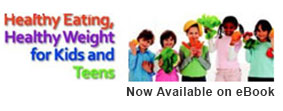Candy, Cavities and the Truth about a Sugar Buzz
By: Jodie Shield, R.D.
Halloween may be over but the candy is still around. While your kids are basking in the afterglow, chances are you’re shell-shocked. I know that I am. After all, the holiday season is about to hit and you know what that means: more candy, more cookies, more soft drinks, more SUGAR. Is sugar really that bad? Here’s the latest scoop on sugar.
Sugar and Hyperactivity
Sugar does not cause kids to be hyper. That was the conclusion of a presentation by Keith-Thomas Ayoob, Ed.D, R.D., at the American Dietetic Association’s Food and Nutrition Conference & Exhibition on October 18, 2009 in Denver, CO (www.eatright.org). After reviewing a meta-analysis of over 23 studies, it appears there’s no scientific evidence to suggest that sugar, and other sweeteners like honey or high fructose corn syrup (sugar found in soft drinks), influence behavior or cause attention deficit hyperactivity disorder. In fact, some studies have found the opposite – that sugar might actually have a calming effect on children. In addition, a few studies found that sugar may even boost kids’ concentration skills and enhance long-term memory. But you still may want to hold off on that extra spoonful of sugar. Sugar provides calories with little or no nutrients. The bottom-line: it appears that kids often get “buzzed” after consuming sugary foods and beverages, not so much from the sugar but the hyped-up situations in which they get the sweet stuff – – birthday parties, play dates, holidays, and school parities. Some tips to prevent kids from experiencing a sugar buzz and too many empty calories:
Beware of added sugars. Added sugars refer to sugars and syrups added to foods during processing or preparation and include: brown or white sugar (sucrose) honey, high fructose corn syrup and molasses. Since sugar is found in so many foods and beverages, you’ll want to keep tabs on it. Here are some of the food groups that contribute more than 5 percent of the added sugars to the American diet:
Major Sources of Added Sugars in the American Diet
|
Food Categories |
Percent of Total Added Sugars Consumed |
| Regular soft drinks |
33.0 |
| Sugars and candy |
16.1
|
| Cakes, cookies, pies |
12.9 |
| Fruit drinks (fruitades and fruit punch) |
9.7 |
| Dairy desserts and milk products(ice cream, sweetened yogurt, and sweetened milk) |
8.6
|
| Other grains (cinnamon toast and honey-nut waffles) |
5.8 |
Data derived from Guthrie and Morton JADA, 2000; 100; 43-51.
Know your child’s sugar limit. When it comes to sugar, moderation is the key. The 2005 Dietary Guidelines (www.healthierus.gov/dietaryguidelines) provide limits for discretionary calories – extra calories above and beyond daily nutrient requirements from each of the food groups. They also provide limits as to how much of these discretionary calories should come from fat and added sugars. Discretionary calories are based on everyone’s recommended calorie level. Not sure how many calories your child needs? To find out, go to www.mypyramid.gov. Here are a few examples of how many teaspoons of sugar kids (and adults) should have based on specific calorie levels:
2005 Dietary Guidelines: Discretionary Calories
| 1400 calories/day | 2000 calories/day | 2400 calories/day | |
| Total Discretionary Calories | 171 cal | 267 cal | 362 cal |
| From Sugar | 16 g = 4 tsp | 32 g = 8 tsp | 48 g = 12 |
| From Fat | 14 g | 18 g | 22 g |
Ref: 2005 U.S. Dietary Guidelines for Americans
Sugar: A Cavity Culprit?
While there may be no correlation between sugar and hyperactivity, eating sugary foods like candy, cakes, and cookies and drinking sugary beverages like fruit drinks and soda pop has been scientifically linked to tooth decay. A cavity forms when bacteria in the mouth (found in dental plaque) mixes with carbohydrates (from either sugary or starchy foods like crackers, popcorn, bread, and potato chips) to make acids. These acids eat way at tooth enamel causing cavities. Here are a few tips to combat cavities:
Promote good dental habits. Encourage you child to brush her teeth with fluoride toothpaste at least twice a day – preferably between meals and snacks – and to floss daily. You should also make sure that your child visits a dentist regularly.
Offer teeth-friendly foods. Foods like sharp cheddar, Monterey Jack and Swiss cheese have been shown to increase the flow of saliva, which helps to lower the acid levels in the mouth and prevent cavies. Plus they’re excellent source of calcium and phosphorus – nutrients that can help make teeth strong.
As we march onward through the holiday season, keep in mind the immortal words of Mary Poppins, “A spoonful of sugar helps the medicine go down”. But remember, to emphasize spoonful. As parents we know that’s where the battle begins. Got any tips for taming your kids’ sweet tooth?







Comment (1)